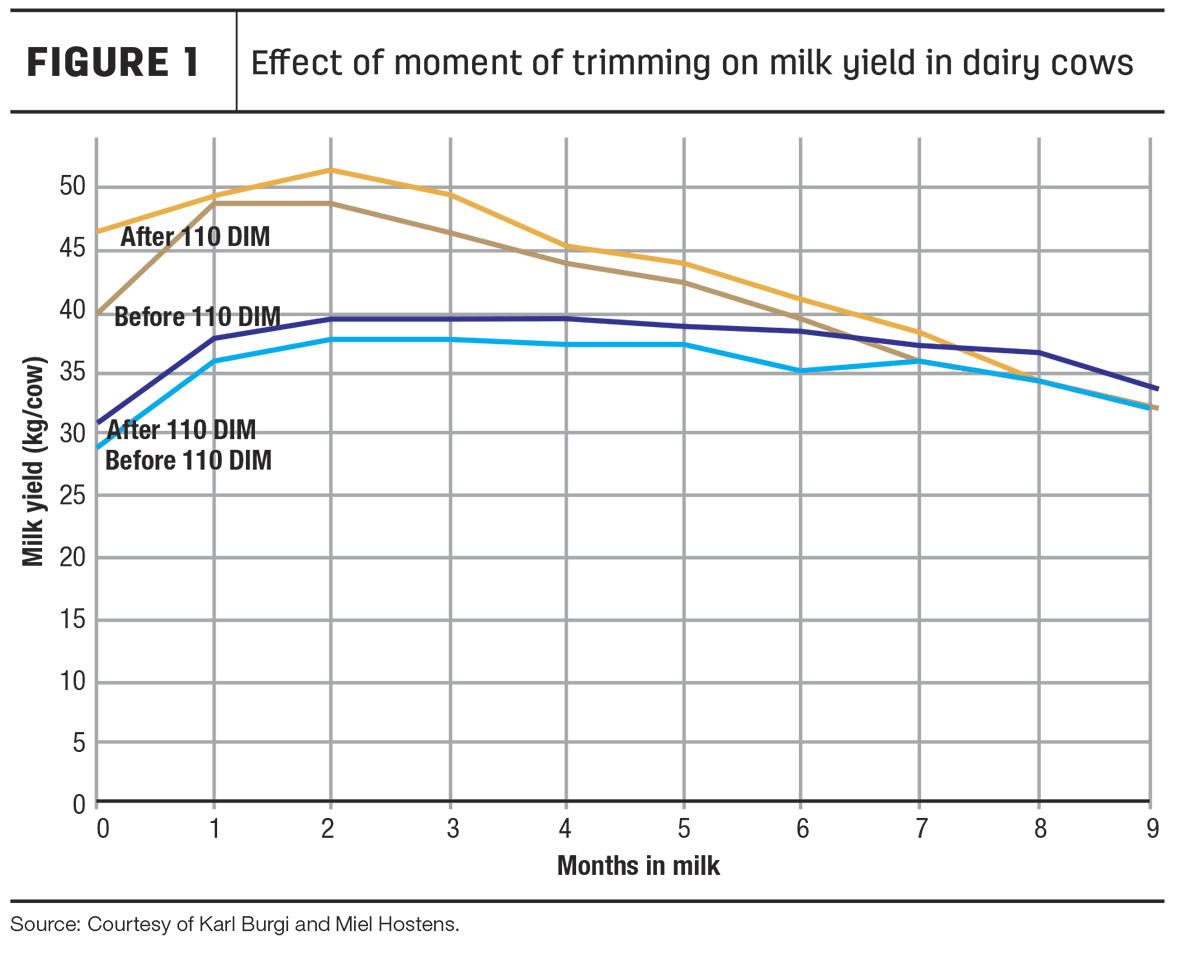Hoof trimming has been widely recognized as a crucial element in the prevention of lameness in ruminants. Despite this, there remains significant debate regarding the optimal timing for trimming during lactation. Producers express concerns that restraining cows during hoof trimming might induce both short- and long-term effects on production and behavior. Modern dairy farms, however, are increasingly utilizing data from sensors, herd management systems and hoof-trimming software, which may provide insights into these pressing concerns.
In a collaborative effort, Save Cows Network and Cornell University have been leveraging the MmmooOgle platform to reveal early findings. The study investigates the impact of hoof trimming on milk production and cow behavior, with results to be presented at the upcoming Lameness In Ruminants Conference in Venice, Italy, in September 2024.
Impact of trimming on milk production
The first study focused on a Wisconsin dairy farm that did not adhere to a specific hoof-trimming schedule but performed trimming throughout lactation. Data were collected from the AccuTrim software and integrated with milk production records from the DairyComp 305 herd management system. The cows’ lactations were categorized based on the timing of the first trimming event, either before or after 110 days in milk (DIM). Figure 1 illustrates that both first parity (blue) and multiparous cows (orange) that were trimmed for the first time after 110 DIM (represented by darker colors) produced more milk compared to their counterparts trimmed before 110 DIM (lighter colors).

These findings indicate that the timing of preventive hoof trimming during lactation can significantly influence milk production. Specifically, trimming cows too early in lactation may adversely affect milk yield. This suggests that dairy farms need to carefully consider the timing of trimming interventions to optimize production outcomes. Future integration of more comprehensive data could enable farms to better evaluate and refine their hoof-trimming schedules, thereby improving overall herd productivity and health.
Impact of trimming on behavior
In a second study, behavior data from Sensoor EarTags and hoof-trimming records from a Wisconsin dairy farm were analyzed. The data spanned two years and included sensor data from six weeks before to six weeks after trimming. The cows were categorized into two groups: "TRIM" for those that were trimmed without lesions and "LAME" for those diagnosed with lameness or lesions detected during trimming. Figure 2 shows that rumination time was comparable between TRIM and LAME cows except during the week of trimming, when rumination decreased by about 22 minutes in the LAME group.

Eating time for LAME cows began to decline two weeks before trimming, with the most significant drop of 53 minutes occurring in the week of trimming. This reduction in eating time persisted up to six weeks post-trimming. Additionally, high activity levels were reduced by 12 minutes in LAME cows starting two weeks before trimming and remained lower for up to five weeks after trimming. Notably, this farm treats lame cows within 24 to 48 hours of diagnosis and maintains a low lameness rate. Most lesions treated on the farm are typically severe, often due to vigorous movement on secure concrete floors with sand bedding rather than common conditions like sole ulcers or white-line lesions.
Historically, there has been limited data on the eating, rumination and activity behavior of lame cows compared to those only requiring routine hoof trimming. This study provides valuable insights, although the generalizability of these findings to farms with higher lameness rates remains uncertain. To expand the understanding of hoof trimming’s impact, we are seeking additional farms willing to share their hoof-trimming, herd management and sensor data. Interested parties are encouraged to contact us for collaboration.
Conclusion
The studies underscore the importance of the timing of hoof trimming and its substantial effects on milk production and cow behavior. Early findings suggest that trimming too early in lactation can negatively impact milk yield, highlighting the need for precise timing to optimize production. Moreover, behavioral changes in cows, particularly those that are lame, indicate significant disruptions in rumination and eating patterns, which can persist weeks after trimming. These insights emphasize the critical role of timely and appropriate hoof care in maintaining the overall health and productivity of dairy herds.
By leveraging advanced data collection and integration from modern dairy farm technologies, producers can gain a deeper understanding of the optimal practices for hoof trimming. This data-driven approach can lead to more informed decisions that enhance herd management strategies, ultimately improving animal welfare and farm profitability. As research continues, the collaboration between experts and farms will be essential in refining these practices and addressing the complexities of hoof health in dairy cows.
The upcoming presentation at the Lameness In Ruminants Conference will further shed light on these important findings, providing a platform for discussion and dissemination of knowledge within the industry. The ongoing efforts to gather and analyze more data will undoubtedly contribute to a more comprehensive understanding of the intricate relationships among hoof trimming, milk production and cow behavior.
References are omitted but available upon request. Click here to email an editor.







